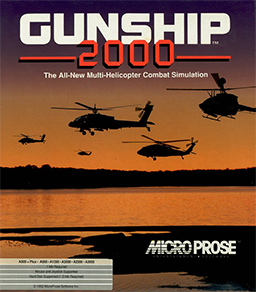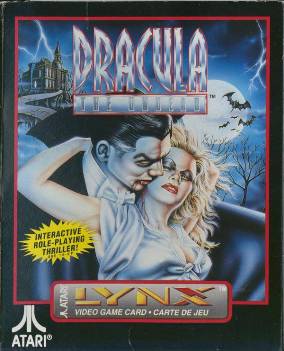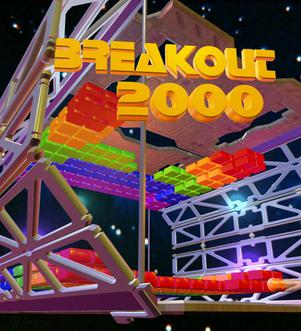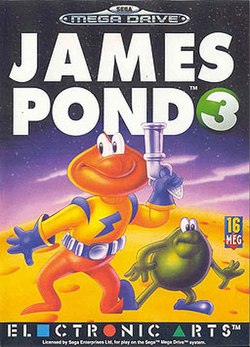
The Atari Jaguar is a home video game console developed by Atari Corporation and released in North America in November 1993. Part of the fifth generation of video game consoles, it competed with the 16-bit Sega Genesis, the Super NES and the 32-bit 3DO Interactive Multiplayer that launched the same year. Powered by two custom 32-bit processors – Tom and Jerry – in addition to a Motorola 68000, Atari marketed it as the world's first 64-bit game system, emphasizing its 64-bit bus used by the blitter. The Jaguar launched with Cybermorph as the pack-in game, which received divisive reviews. The system's library ultimately comprised only 50 licensed games.

Zool 2 is a side-scrolling platform video game originally developed by The Warp Factory and published by Gremlin Graphics for the Amiga in November 1993. It is the sequel to the original Zool, which was released earlier in 1992 on various platforms.

Pinball Fantasies is a 1992 pinball video game originally developed by Digital Illusions and published by 21st Century Entertainment in Europe for the Amiga home computers. It is the sequel to Pinball Dreams, which was released earlier in the same year on multiple platforms. In the game, players can choose between any of the four available playfields, both of which have their own thematic and main objectives in order to obtain the highest score possible.

Soccer Kid is a 1993 side-scrolling platform game developed and published by Krisalis Software in Europe for the Amiga. The player assumes the role of the titular main protagonist who travels across several countries around the world to repair the World Cup by retrieving pieces that were scattered by the alien pirate Scab, the main antagonist who failed to steal and add it to his trophy collection in a robbery attempt. Its gameplay mainly consists of platforming and exploration elements, with a main single-button or two-button configuration, depending on the controls setup.

Gunship 2000 is a helicopter combat flight simulation video game developed and published by MicroProse as a follow-up to their earlier game Gunship. It was originally released in 1991 for DOS; this version received an expansion in 1992. The Amiga, PC-98, Amiga CD32 and PlayStation versions were released in 1993, 1994 and 1996 respectively. A sequel, Gunship!, was released in 2000.

Graham Gooch World Class Cricket is a cricket video game developed and published by Audiogenic in 1993. It is endorsed by former England cricketer Graham Gooch and is available for the Amiga and PC computer systems.

Worms is a 2D artillery tactical video game developed by Team17 and released in 1995. It is the first game in the Worms series of video games. It is a turn based game where a player controls a team of worms against other teams of worms that are controlled by a computer or human opponent. The aim is to use various weapons to kill the worms on the other teams and have the last surviving worm(s).

Baldies is a 1995 real-time strategy video game developed by Creative Edge Software and originally published by Atari Corporation for the Atari Jaguar CD. It was later ported to the PC, PlayStation, and Sega Saturn. In the game, the player manages a community of Baldies in order to build structures, increase their population, and create weapons to fight against enemies known as Hairies. There are four classes of Baldies and each structure has specific properties to assist the player. Its gameplay combines strategy with simulation and god game elements. Up to four players can participate in a multiplayer mode via local area network (LAN) on PC.

Iron Soldier is an open world first-person mecha simulation video game developed by Eclipse Software Design and published by Atari Corporation for the Atari Jaguar in North America and Europe on December 22, 1994, then in Europe in January 1995 and later in Japan on March 24 of the same year, where it was instead published by Mumin Corporation. The first installment in the eponymous franchise, the game is set in a dystopian future where industries and machinery has overrun most of the surface on Earth, as players assume the role of a resistance member taking control of the titular mech in an attempt to overthrow the dictatorship of Iron Fist Corporation, who have conquered the world through usage of military force.

Dracula - The Undead is a video game released in 1991 for the Atari Lynx handheld system. The game is loosely based on Bram Stoker's novel Dracula and features Bram Stoker in the story as the narrator.

Falcon is a combat flight simulator video game and the first official entry in the Falcon series of the F-16 jet fighter's simulators by Spectrum HoloByte. Originally developed by Sphere for Macintosh and MS-DOS in 1987 and ported to several platforms between 1988 and 1992, the game earned commercial success and critical acclaim.

Robinson's Requiem is a 1994 survival simulation video game developed and originally published by Silmarils exclusively in Europe for the Atari ST, Atari Falcon and Amiga. Taking place in the 22nd century where Earth and colonized planets are facing overpopulation, the game sees players assuming the role of Robinson officer Trepliev 1 from the Alien World Exploration department in his attempt to escape imprisonment from the fictional planet of Zarathustra alongside another AWE Robinson named Nina1, while facing several hostile creatures and dangers in order to survive.

Wild Cup Soccer is an arcade-style soccer video game developed by Teque London and published by Millennium Interactive for the Commodore Amiga and Amiga CD32 in 1994. It is the successor to Brutal Sports Football (1993).

Manchester United Europe, developed by Krisalis Software, is the follow-up to the 1990 video game Manchester United which had sold over 100,000 copies. The Atari Lynx port was released under the title of European Soccer Challenge.

World Tour Racing is a Formula One racing video game developed by Teque London and published by Telegames exclusively for the Atari Jaguar CD on June 2, 1997. It is the spiritual successor to F1 Licenceware's 1994 Amiga game F1-Racer and one of the last licensed titles for the add-on after being discontinued in 1996 by Atari Corporation, who merged with JT Storage in a reverse takeover prior to launch.

Virtuoso is a third-person shooter video game developed by MotiveTime and originally published by Nova Spring and Elite Systems in North American and Europe for the DOS in 1994.

Breakout 2000 is a 1996 action video game developed by MP Games and published by Telegames for the Atari Jaguar. Part of the 2000 series by Atari Corporation, it is a remake of the arcade game Breakout (1976), and one of the last officially licensed releases for the platform. Featuring a similar premise to Breakout, the player must destroy a layer of brick lines by repeatedly bouncing a ball spawned off a paddle into them and keep it in play. Gameplay modifications to the original game include a third-person perspective behind the paddle in a pseudo-3D playfield, power-ups, bonus levels, enemies, varying level designs, and multiplayer features.

Brutal Sports Football is a 1993 sports video game developed by Teque London and originally published by Millennium Interactive for the Amiga. It was re-published for MS-DOS and Amiga CD32, and later became the first third-party title published for the Atari Jaguar. The first entry in the Brutal Sports series, the game is a fictional style of football played against human or computer-controlled opponents. It features a different take on american football by emphasising the violent aspect of the sport.

Zero 5 is a shooter video game developed by Caspian Software and published by Telegames exclusively for the Atari Jaguar on September 29, 1997. It is a remake of the 1994 Atari STe title of the same name and one of the last licensed releases to be published for the Jaguar after being discontinued in 1996 by Atari Corporation, who merged with JT Storage in a reverse takeover prior to its eventual launch.

Ultimate Brain Games is an unreleased board video game that was in development by Teque London and planned to be published by Telegames on a scheduled Q2 1995 release date exclusively for the Atari Jaguar. The game was going to be a spiritual successor to Fidelity Electronics and Telegames's 1991 Atari Lynx title The Fidelity Ultimate Chess Challenge. It was also intended to be released the Atari Jaguar CD add-on and later on the PC.





















